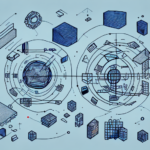Understanding Condition-Based Maintenance (CBM)
Condition-based maintenance (CBM) is a proactive maintenance strategy aimed at optimizing the reliability and performance of assets such as machines, equipment, and facilities. By leveraging real-time data from various sensors and monitoring tools, CBM allows organizations to detect potential issues or faults before they escalate into major problems. This data-driven approach helps reduce downtime, lower maintenance costs, and improve overall safety and efficiency.
The Evolution and Historical Origins of CBM
CBM originated in the aviation industry, where it was first implemented to enhance the reliability and safety of aircraft engines. Over time, the principles of CBM were adopted by other sectors including manufacturing, energy, and transportation. The advancement of technologies like artificial intelligence (AI), machine learning, and the Internet of Things (IoT) has significantly enhanced CBM methodologies, enabling more sophisticated predictive maintenance practices.
Today, CBM integrates advanced data analytics and real-time monitoring to provide a comprehensive view of asset health, allowing for more precise maintenance scheduling and resource allocation.
The Critical Role of CBM Across Industries
CBM has become indispensable in various industries due to its ability to improve operational efficiency and reduce costs. Here are some key sectors benefiting from CBM:
- Aviation: Real-time monitoring of aircraft engines to prevent failures and ensure passenger safety.
- Manufacturing: Continuous assessment of machinery to minimize downtime and maintain production schedules.
- Energy: Monitoring of power generation equipment to enhance reliability and reduce maintenance costs.
- Healthcare: Ensuring the functionality of medical equipment to improve patient outcomes.
- Agriculture: Monitoring crop and livestock health to optimize farming practices.
According to a McKinsey report, predictive maintenance can reduce maintenance costs by 10-40% and decrease downtime by 25-30%.
Foundational Principles and Techniques of CBM
CBM is built upon three core principles: monitoring, analyzing, and acting. Here's a deeper look into each:
- Monitoring: Continuous data collection through sensors and IoT devices to track asset conditions.
- Analyzing: Utilizing advanced algorithms and machine learning to interpret data and identify potential issues.
- Acting: Implementing corrective actions based on analysis to prevent asset failure.
Common CBM techniques include:
- Vibration Analysis: Detects abnormalities in rotating machinery like motors and pumps.
- Oil Analysis: Identifies contaminants and wear particles in lubricating oils to predict machinery degradation.
- Thermography: Uses infrared imaging to detect overheating in electrical systems and mechanical components.
- Ultrasonic Testing: Detects high-frequency sound waves to identify cracks or leaks in materials.
- Visual Inspections: Regularly examining equipment for visible signs of wear or damage.
For more detailed information on CBM techniques, refer to the BMW Group's maintenance strategies.
Benefits and Challenges of Implementing CBM
Implementing CBM offers numerous advantages:
- Reduced Downtime: By addressing issues before failures occur, CBM minimizes unexpected equipment shutdowns.
- Cost Savings: Predictive maintenance reduces repair and replacement costs by targeting maintenance efforts precisely.
- Enhanced Safety: Prevents hazardous equipment failures, ensuring a safer working environment.
- Improved Efficiency: Optimizes maintenance schedules, allowing for better resource allocation.
However, there are challenges to consider:
- Initial Investment: Significant costs associated with the necessary hardware, software, and training.
- Technological Complexity: Requires specialized expertise to manage and interpret data effectively.
- Data Management: Handling large volumes of data from diverse sources can be overwhelming without proper systems in place.
- Resistance to Change: Organizational inertia and skepticism can hinder the adoption of CBM practices.
Despite these challenges, the long-term benefits of CBM make it a valuable investment for many organizations.
Implementing an Effective CBM Program
Developing and deploying a successful CBM program involves several key steps:
- Identify Critical Assets: Determine which assets are vital to operations and prioritize them for CBM.
- Select Appropriate CBM Techniques: Choose monitoring and analysis methods that best suit the identified assets.
- Develop a Data Collection Plan: Establish protocols for data acquisition, storage, and processing.
- Allocate Resources: Ensure adequate budget, technology, and personnel are in place to support CBM initiatives.
- Train Personnel: Provide comprehensive training to staff on CBM tools, data interpretation, and maintenance procedures.
- Continuous Improvement: Regularly assess and refine the CBM program to enhance its effectiveness and adapt to changing needs.
For a comprehensive guide on implementing CBM, refer to the Institute of Risk Management International (IRMI).
Advanced Technologies Enhancing CBM
Emerging technologies are significantly advancing the capabilities of CBM:
- Artificial Intelligence and Machine Learning: Enable more accurate prediction models and automate data analysis processes.
- Internet of Things (IoT): Facilitates seamless data collection from a multitude of connected devices and sensors.
- Digital Twins: Create virtual replicas of physical assets to simulate and predict their behavior under various conditions.
- Blockchain Technology: Enhances data security and transparency, ensuring reliable maintenance records.
- Drones: Provide efficient and safe inspection capabilities for hard-to-reach areas, reducing the need for manual inspections.
These technologies not only improve the precision and efficiency of CBM but also open new possibilities for predictive analytics and real-time decision-making. According to a Gartner report, the integration of AI in maintenance strategies can enhance predictive accuracy by up to 50%.
Future Trends and Innovations in CBM
The future of CBM is poised to be shaped by several key trends and innovations:
- Big Data Analytics: The growing volume of data from various sources will drive more sophisticated analysis and insights.
- Augmented Reality (AR): Will assist maintenance personnel by providing real-time information and visual aids during repairs.
- Advanced Robotics: Will automate routine maintenance tasks, increasing efficiency and reducing human error.
- Enhanced Cybersecurity: Will become crucial as CBM systems become more interconnected and reliant on digital technologies.
- Sustainable Maintenance Practices: Focused on reducing the environmental impact of maintenance activities through optimized resource use and waste reduction.
These advancements will continue to make CBM more effective, accessible, and integral to various industries. Staying abreast of these trends is essential for organizations looking to maintain a competitive edge through efficient and reliable maintenance practices.
Real-World Success Stories of CBM Implementation
CBM has been successfully adopted across diverse industries, showcasing its versatility and effectiveness:
- Manufacturing: Companies have reported up to a 30% reduction in unplanned downtime and a 20% increase in production efficiency by implementing CBM.
- Energy: Energy providers have enhanced equipment reliability and reduced maintenance costs by integrating CBM into their operations.
- Aerospace: Airlines have improved aircraft availability and safety by utilizing CBM for real-time engine monitoring.
- Transportation: Fleet operators have achieved significant cost savings and increased vehicle uptime through predictive maintenance strategies.
- Healthcare: Hospitals have ensured the reliability of critical medical equipment, improving patient care and operational efficiency.
For example, General Electric has successfully implemented CBM across its manufacturing facilities, resulting in substantial operational improvements and cost savings.
Conclusion
Condition-based maintenance is a transformative approach that leverages advanced technologies to enhance the reliability and performance of assets across various industries. By implementing CBM, organizations can achieve significant cost savings, reduce downtime, and improve safety and efficiency. As technology continues to evolve, the capabilities of CBM will expand, offering even greater potential for predictive maintenance and operational excellence.




















